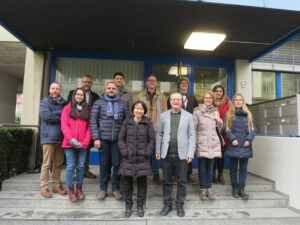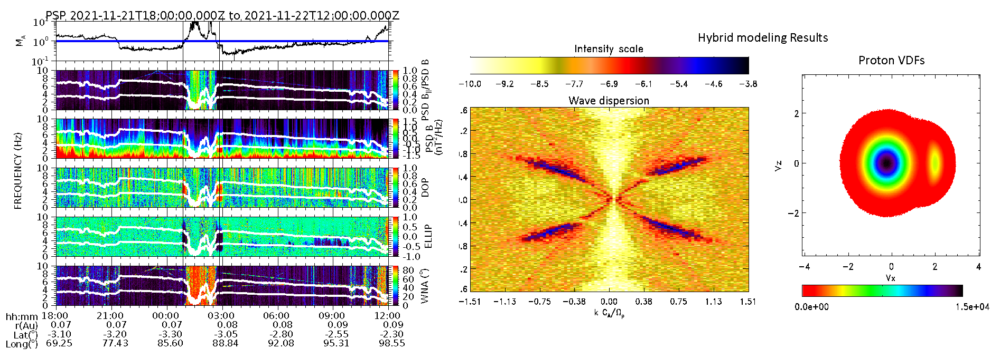
Abstract
The perihelia observations by Parker Solar Probe (PSP) provide unprecedented measurements of proton and alpha particle populations, in particular their non-Maxwellian velocity distributions, and associated kinetic wave activity, providing signatures of ion kinetic instabilities in the inner heliosphere reaching the acceleration region of the solar wind. The kinetic instabilities provide a crucial step in the cascade of energy from large (fluid) to small (kinetic) scales and eventual plasma heating. The inner heliospheric observations obtained from the PSP SPAN-I and FIELDS instruments as well as by the Solar Orbiter (SolO) SWA instrument suggest turbulent wave spectra in the ion-kinetic range and wave particle interactions that can provide insights into the solar wind acceleration and heating processes close to the Sun. We must now develop the theoretical understanding of these observations is now being developed, supported by computational modeling of the solar wind plasma. We have assembled an International Team that consists of experts in solar wind plasma data analysis, modeling, and theory that will synthesize a new understanding of the PSP and SolO observational data, combined with theoretical knowledge and state of the art computational modeling. The team will implement synergy between observations and theory, and focus on developing new thinking required for the understanding of the novel PSP data at perihelia encounters. The results will provide progress on the most important outstanding science questions of solar wind plasma physics, i.e., the heating and acceleration of the solar wind ions. The team will establish the relation between various solar wind types (e.g., slow, Alfvénic), ion kinetic scale waves, and the velocity distributions of protons and alpha particles. In particular, we will investigate polarization and spectral data of ion electromagnetic cyclotron waves (ECWs) during periods of enhanced activity and the variability of the ion heating connecting theoretical/modeled instabilities and resonances. We will also explore the proton and alpha particle non-Maxwellian velocity distributions, temperature anisotropies, and beam dynamics during switchbacks (i.e., radial magnetic field polarity reversals). The team topic is extremely timely and novel thanks to the unprecedented data coming from PSP and SolO spacecraft, and feasible in the framework of the focused ISSI meeting format and is expected to result in new high-impact refereed publications by the team members.
Plain Language Summary
The Parker Solar Probe (PSP) launched by NASA five years ago to explore the space environment close to the Sun provides unprecedented measurements of charged particle (electrons, and ions) and electromagnetic field properties in this previously unexplored region. The interplanetary space is filled with the solar wind that constantly evolves as it propagates away from the Sun. PSP’s findings show that the hot gas of these charged particles is very turbulent and more unstable than previously thought. The Solar Orbiter (SolO) spacecraft also provided new solar wind data farther from the Sun that complements our knowledge. The ISSI team of international experts on “Ion Kinetic Instabilities in the Solar Wind in Light of Parker Solar Probe Perihelia Observations“ was convened in Bern, Switzerland in order to develop understanding of these new findings. The team combines theory, observations, and computational models of the solar wind plasma. The team has analyzed new results on the various types of solar wind, the turbulence and instabilities properties, and on the magnetic waves detected near the Sun by PSP. The team discussed and explored the new data and theories providing progress in the understanding of these complex phenomena. Through the collaborative work, the team has developed new thinking for the understanding of the novel findings from PSP and achieved progress addressing the most important long-standing science question regarding solar wind plasma processes of heating and expansion. The results of the team’s work are being published as articles in scientific journals, including a joint review paper, currently in preparation for publication.

